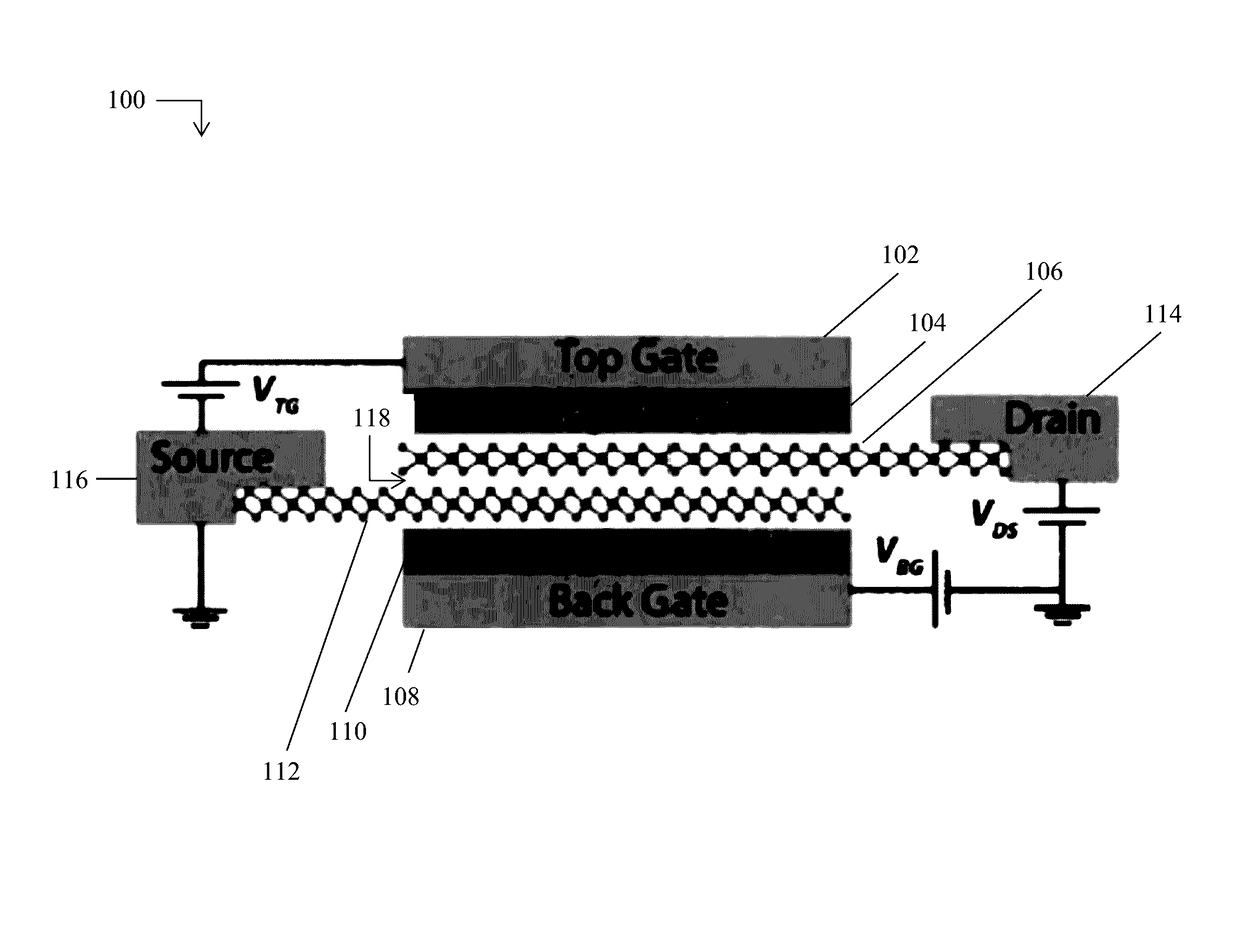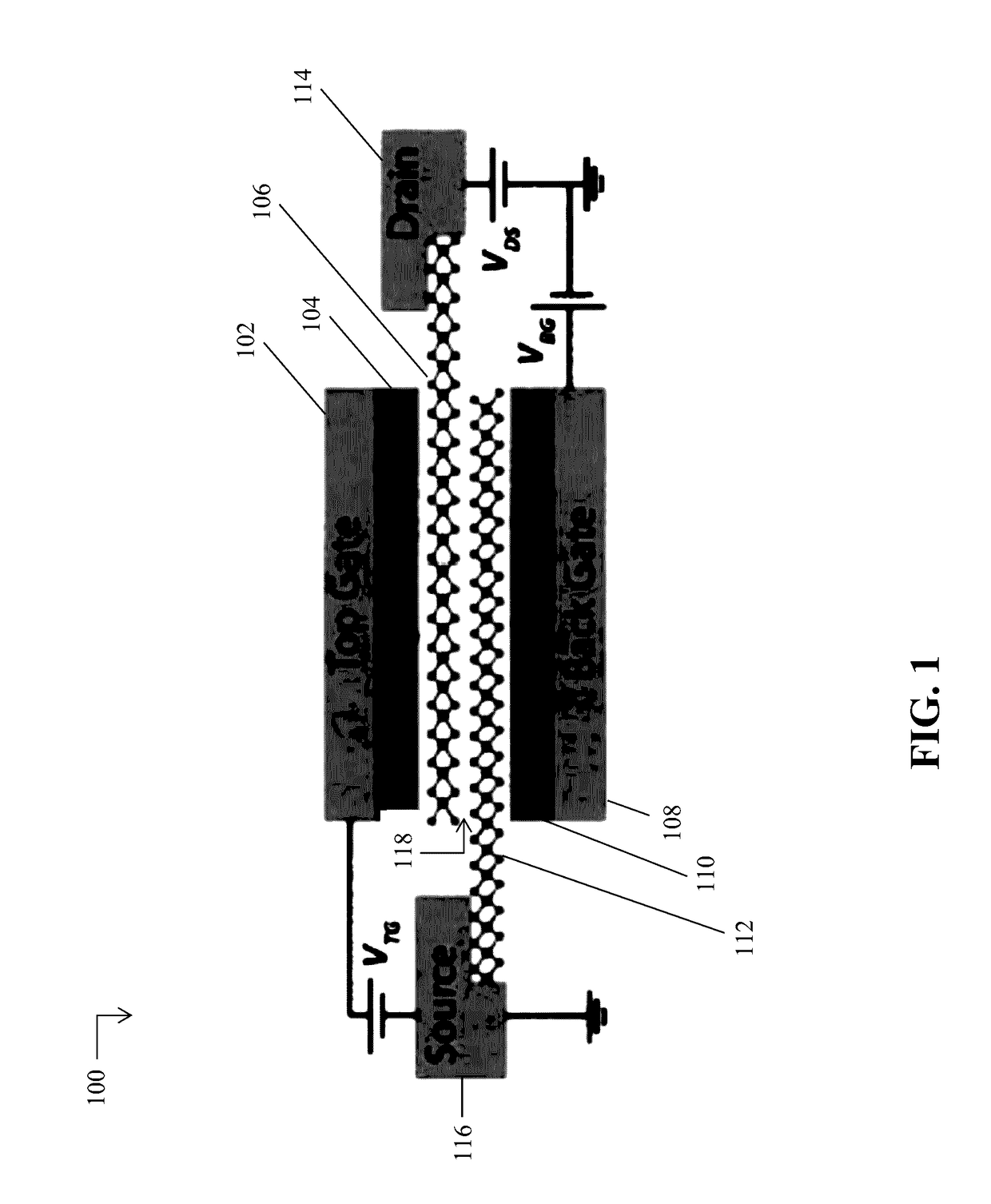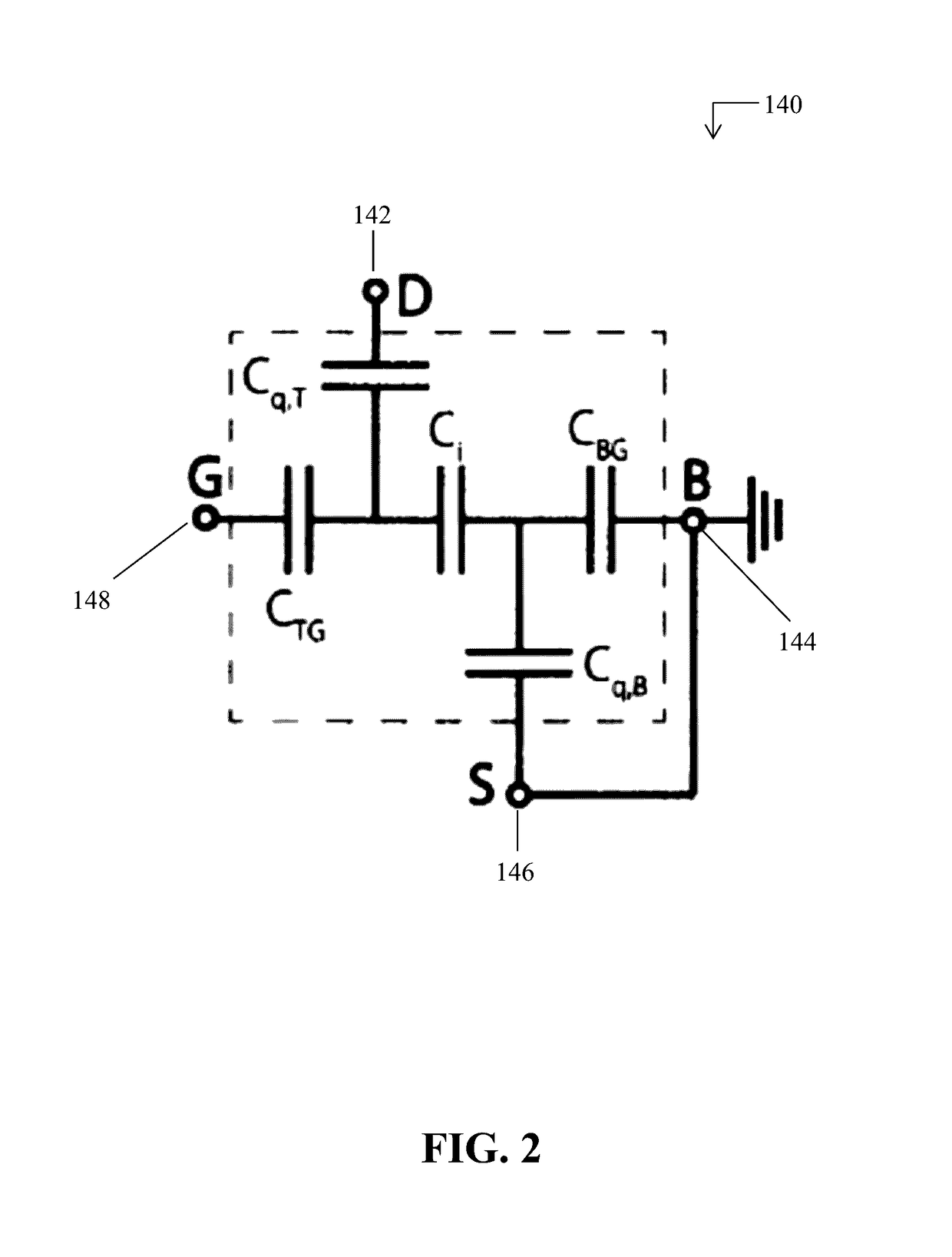Two-dimensional heterojunction interlayer tunneling field effect transistors
a field effect transistor and heterojunction technology, applied in transistors, semiconductor devices, electrical equipment, etc., can solve the problems of increasing device-to-device variability, power dissipation of such circuits, and power consumption in these integrated circuits
- Summary
- Abstract
- Description
- Claims
- Application Information
AI Technical Summary
Benefits of technology
Problems solved by technology
Method used
Image
Examples
Embodiment Construction
[0031]The following description of example methods and apparatus is not intended to limit the scope of the description to the precise form or forms detailed herein. Instead the following description is intended to be illustrative so that others may follow its teachings.
[0032]Monolayers of group-VIB transition metal dichalcogenides (TMDs) according to the formula MX2—where M=Mo or W, and where X=S, Se, or Te—have recently attracted attention for their electronic and optical properties. As explained below, these materials may be utilized by the 2D crystal layers in the example 2D heterojunction interlayer tunneling field effect transistors (Thin-TFETs) disclosed herein. Monolayers of TMDs have a bandgap that varies from almost zero to 2 eV with a sub-nanometer thickness. As a result, these materials are considered to be approximately two-dimensional (2D) crystals. 2D crystals, in turn, have recently attracted attention primarily due to their scalability, step-like density of states, a...
PUM
 Login to View More
Login to View More Abstract
Description
Claims
Application Information
 Login to View More
Login to View More - R&D
- Intellectual Property
- Life Sciences
- Materials
- Tech Scout
- Unparalleled Data Quality
- Higher Quality Content
- 60% Fewer Hallucinations
Browse by: Latest US Patents, China's latest patents, Technical Efficacy Thesaurus, Application Domain, Technology Topic, Popular Technical Reports.
© 2025 PatSnap. All rights reserved.Legal|Privacy policy|Modern Slavery Act Transparency Statement|Sitemap|About US| Contact US: help@patsnap.com



